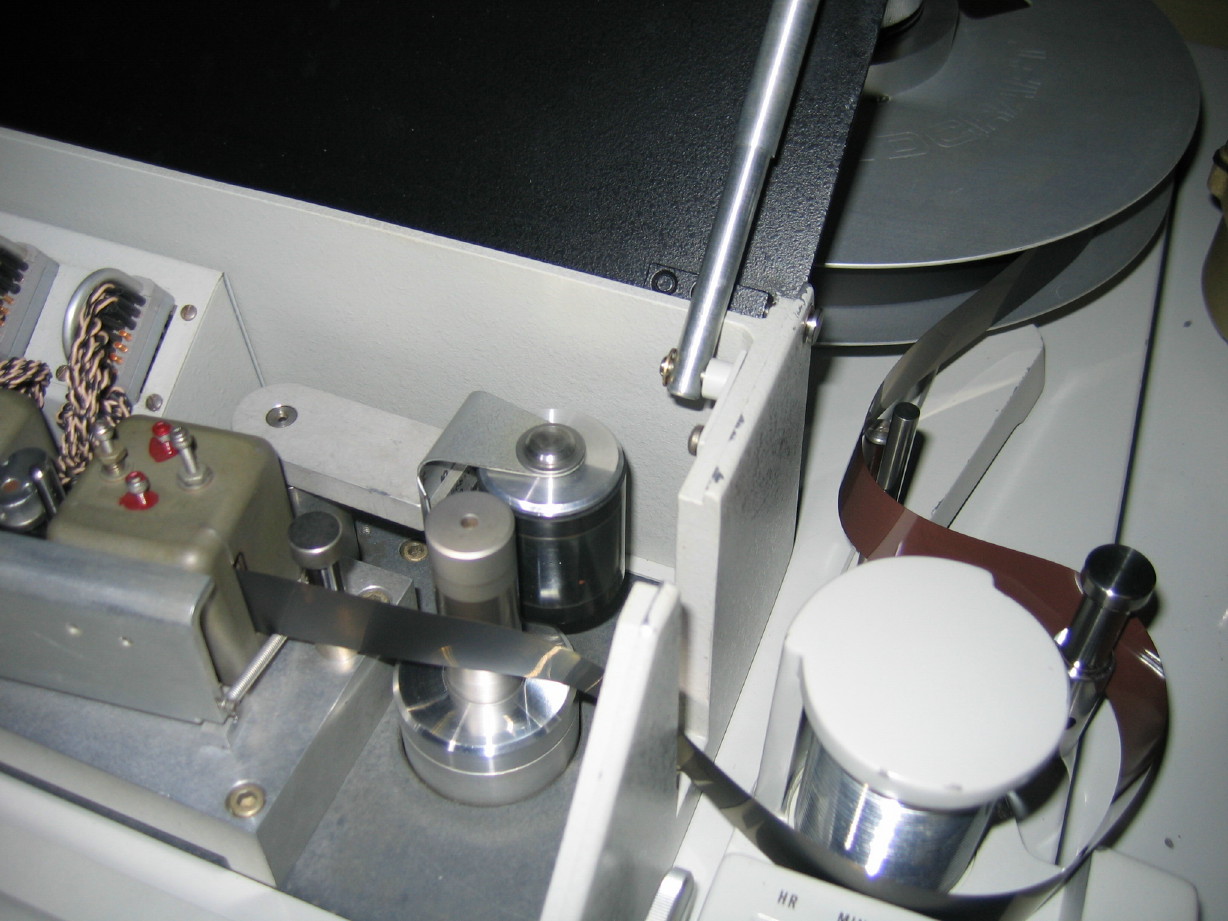Cory, your analogy about front wheel drive/ bald back tires is all wrong.
If the capstan is doing all the work here, then why do you need a pinch roller at all? Cause the pinch roller is where the friction is, NOT the capstan. One of the two surfaces that contact the tape needs to have grip to move the tape...otherwise THAT is bald tires on ice. Put on chains (grippy pinch roller) and you are good to go. Consider: you would not want a rough capstan as thats the side that contacts the oxide, and it could damage the business side of the tape.
Nuff said.
I disagree completely.
Why do you need a pinch roller at all? Just like miroslav said,
because the capstan is a hard slick surface and needs something to "pinch" the tape to it so it can drive the tape. And of course the capstan
has to be a hard slick surface or it wouldn't last and would also wreak havoc with wow and flutter.
Ampex asked the question why do you need it and *poof* gave us the ATR-100 which has no pinch roller, just a big capstan. Stephens asked the bigger question and *poof* gave us a capstanless transport, but I digress...
Techno, how can you say the pinch roller is doing any "drive" work when it is a passive roller? Unless one of your tape machines has a powered pinch roller?? The traditional name for a pinch roller is the "capstan
idler"...Webster's definition for idler says "not working or active...doing nothing." I can say that the capstan is doing all the work (the driving force)
because it is the only thing powered in the relationship!
I've got another analogy: you ever had a car stuck in the snow and the wheels are just spinning, but then you get some buddies to bounce on the bumper and when they push the car down the tires grip better? The ground is the tape, the tire is the capstan, and your buddies are the pinch roller improving the frictional coefficient between the tires and the ground.
I bet the contact area onto the tape of a hardened pinch roller is smaller than a new pinch roller as the rubber can deform and shape itself to the contour of the capstan with properly soft rubber, but it cannot with hardened rubber. If a proper pinch roller can conform itself somewhat to the contour of the capstan shaft and the tape is in between that also means the
tape will be somewhat more contoured to the capstan increasing the contact area and the frictional coefficient.
THAT's how it works...who cares if it is slick, the pinch roller is doing
no driving but if it can't effectively pinch (i.e. shape itself to the capstan) because it is hardened then
that's the problem.
And BTW, right, you don't want a "rough" capstan but you don't want it polished like a mirror either. You would think that a mirror-smooth surface would have a higher friction coefficient but in this case there is an issue with air getting in between the capstan and the tape, and the smoother the capstan the greater the possibility of air to be in between and reduce the grip of the capstan. Aaaaand while the backing side of the tape is indeed
smooth it is
also a matte surface and two matte surfaces together will grip better than shiny and matte.
A proper capstan has a matte finish, at least that's the case with decks I have except for the BR-20T, but that is pulling 1/4" tape and has a wonderfully harmonius transport with the servo system. You are right to be concerned about the capstan rubbing on the "business side" of the tape, and that's why it is desirable to have a tape path with the capstan on the backing side of the tape. I've never had a deck with the capstan on the oxide side of the tape, though I know that's one way it is done, but of the decks I have or have had (Ampex MM-1000 and 440, Tascam BR-20T, 48, 58, and 388) they all have the capstan mate with the backing side of the tape.
Now, I want to know what does indeed to all of the work in a deck...I'm just wondering if all the reel motors do is keep tension and perform ffwd/rewind functions.
You've got it. Reel motors provide holdback and takeup tension in PLAY mode to keep the tape from getting slack and more importantly to ensure positive tape-to-head contact, and then they provide for fast shuttling in FFWD or REW. The capstan is what drives the tape in a capstan drive transport in PLAY or REC. As I mentioned above, Stephens and others (though IIRC correctly Stephens was the first...Otto?) developed capstanless systems in which the servo mechanism was sophisticated enough to place tape drive responsibility on the reel motors.

 It's amazing how a tiny $30 rubber puck can mean so much in terms of proper functioning of the tape recorder. The guys summed it up nicely and also Muck.. in the other thread: "tape is kinda slippery, both on oxide and back coating. A shiny pinch roller means a pinch roller that is less porous, more hard, more slippery. slippery surfaces on slippery surfaces = issues."
It's amazing how a tiny $30 rubber puck can mean so much in terms of proper functioning of the tape recorder. The guys summed it up nicely and also Muck.. in the other thread: "tape is kinda slippery, both on oxide and back coating. A shiny pinch roller means a pinch roller that is less porous, more hard, more slippery. slippery surfaces on slippery surfaces = issues." Not knocking Terry...its just part of the price of admission for big iron.
Not knocking Terry...its just part of the price of admission for big iron. 

 ]
]

